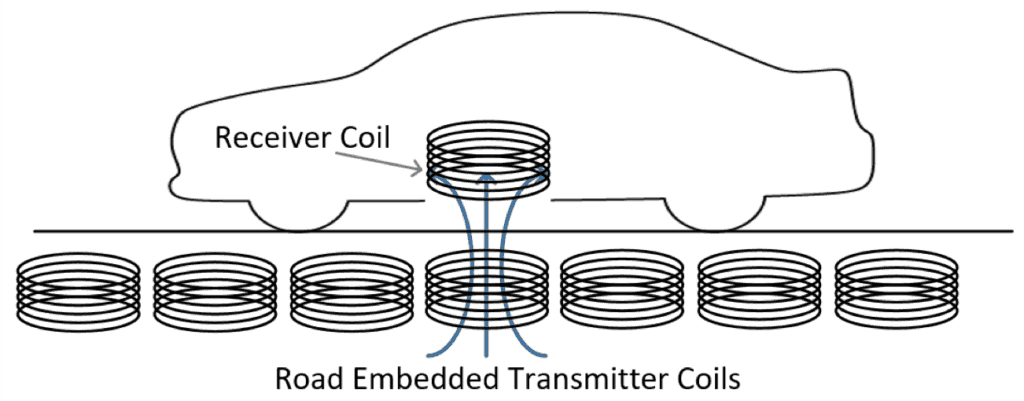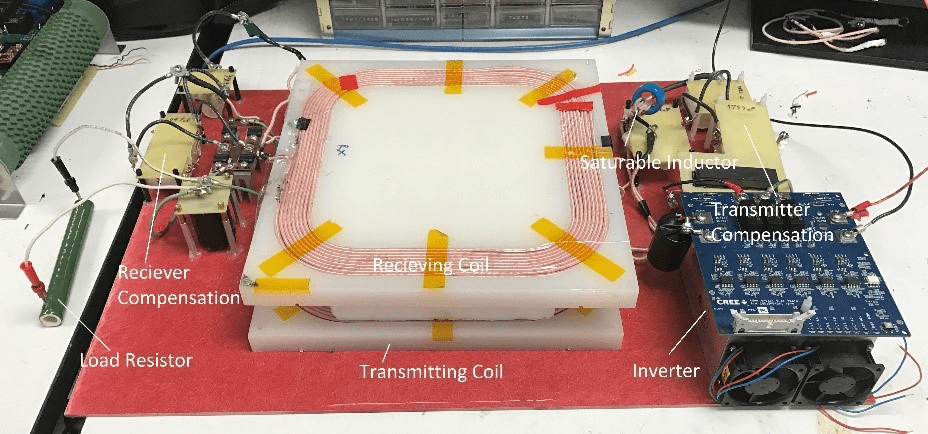Overview
Inductive power transfer has many applications that range from electric vehicle charging to robotics. In dynamic applications, it is required that the segmented transmitter coil transfer power to a moving receiver coil. There are several methods to achieve this that require precise receiver position feedback.
One proposed method to achieve this is using the reflexive field containment approach where the field strength in coupled sections of the system automatically increases based on the reactance reflected by the receiver. This enables efficient power transfer without position sensors and is in compliance with electromagnetic emission standards without complex shielding circuits. A key feature of this system is the use of a single inverter to power the segmented transmitting coils.
The Principal Investigator for this project is Dr. Srdjan Lukic.
Method
In this work, we improve on the concept by adding a saturable inductor to the system to maximize the difference between the coupled and uncoupled currents in the transmitter coil. This project involved developing a new transmitter topology, accurately modeling the saturable inductor, and validating the design process through hardware demonstration.
Results
Hardware validation showed current gains of 11x and power transfer efficiencies over 80%. This current gain is double the values previously reported in the literature. Future work includes implementation in a low speed, test vehicle.
This technology makes dynamic wireless charging practical and has application for any situation using wireless power transfer where the receiver has motion relative to the source. This invention is ready for licensing.
References
- K. Lee, Z. Pantic, and S. M. Lukic, “Reflexive field containment in dynamic inductive power transfer systems,” IEEE Transactions on power Electronics, vol. 29, no. 9, pp. 4592–4602, 2014.
- Invention Disclosure 18-084 (Viewable by FREEDM Members Only)

